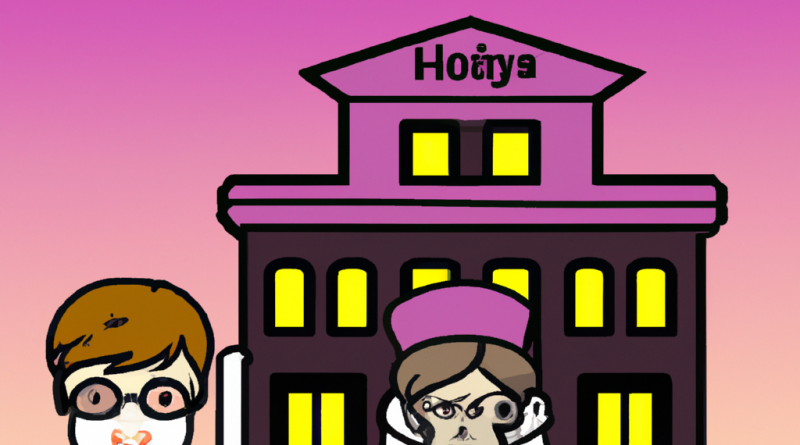“Travel Through Time: Exploring the Fascinating History of Habbo Hotel”
Remember to proofread the post for spelling and grammar errors and optimize it for SEO by including relevant keywords and meta descriptions.
Introduction:
Welcome to the world of Habbo Hotel, where players can create their own virtual avatars, decorate their rooms, and interact with other players from around the world. But did you know that Habbo Hotel has a rich history dating back to 2000? In this blog post, we will dive into the fascinating history of Habbo Hotel and its evolution over the years. From its humble beginnings to its current status as a leading virtual world for teens, we will explore the milestones, challenges, and triumphs that have shaped Habbo Hotel into what it is today.
The Beginnings of Habbo Hotel
The Birth of Habbo Hotel
Habbo Hotel was created in 2000 by a Finnish company called Sulake Corporation. It was originally called “Hotelli Kultakala” which translates to “Hotel Goldfish” in English. The idea behind Habbo Hotel was to create a virtual world for teenagers to socialize, play games, and express their creativity. The founders, Sampo Karjalainen and Aapo Kyrölä, wanted to create a safe and positive online community for young people.
The Launch of Habbo Hotel
After months of development, Habbo Hotel was officially launched in August 2000. The initial version of the game was only available in Finnish and had a limited number of rooms and features. However, it quickly gained popularity among Finnish teenagers, and soon the demand for an English version grew.
The Global Expansion of Habbo Hotel
In 2001, Habbo Hotel expanded to the United Kingdom, and by 2003 it had reached over 40 countries, including the United States, Canada, and Australia. With each new country, Habbo Hotel adapted to the local culture and added new features and games to appeal to a wider audience. This global expansion marked the beginning of Habbo Hotel’s success as a leading virtual world for teenagers.
The Evolution of Habbo Hotel
Habbo Hotel’s Virtual Economy
One of the most unique aspects of Habbo Hotel is its virtual economy, where players can buy and sell virtual furniture and items using the in-game currency called “credits.” These credits can be purchased with real money or earned by participating in various activities within the game. The introduction of this virtual economy in 2003 marked a major turning point for Habbo Hotel, making it more than just a social platform but also a virtual marketplace.
The Rise of Social Networking
In 2004, Habbo Hotel introduced the Friend List feature, allowing players to add and communicate with other players. This marked the beginning of social networking within the game and made it even more appealing to teenagers. The introduction of group messaging, room permissions, and the ability to create and join groups further enhanced the social aspect of Habbo Hotel, making it a popular platform for making new friends and connecting with old ones.
Habbo Hotel Today
Over the years, Habbo Hotel has undergone numerous updates and improvements, including a major redesign in 2014. Today, it boasts over 200 million registered users and is available in 11 languages. The virtual world continues to evolve with new features, games, and events constantly being added to keep players engaged and entertained. Habbo Hotel has also expanded to mobile devices, allowing players to access the game anytime, anywhere.
The Impact of Habbo Hotel
A Safe and Positive Online Space
One of the key goals of the founders of Habbo Hotel was to create a safe and positive online space for teenagers to interact. Through strict moderation and community guidelines, Habbo Hotel has been successful in creating a welcoming environment for players to express themselves without fear of bullying or harassment. This has had a positive impact on many young players, providing them with a sense of belonging and community.
A Platform for Creativity
Habbo Hotel’s virtual world is a blank canvas for players to unleash their creativity. With a wide range of furniture items, clothing, and room backgrounds, players can design and decorate their rooms to reflect their unique style. This has inspired many players to showcase their creativity and has even led to the emergence of virtual interior design businesses within the game.
A Place for Fun and Games
Habbo Hotel is not just a social platform, but also a place for fun and games. With a variety of games, challenges, and events, players can compete and earn rewards, making the experience even more enjoyable. These games also foster teamwork and collaboration, promoting valuable skills among players.
Conclusion:
From its humble beginnings as “Hotel Goldfish” to its current status as a leading virtual world for teenagers, Habbo Hotel has come a long way. With its unique virtual economy, social networking features, and constant evolution, it has captured the hearts of millions of players worldwide. But more than just a game, Habbo Hotel has had a positive impact on many young people, providing them with a safe, creative, and fun online space. We can’t wait to see what the future holds for Habbo Hotel and its players. So, log in, join the fun, and be a part of Habbo Hotel’s history!
Final Thoughts:
Whether you’re a long-time player or new to Habbo Hotel, we hope this blog post has given you a better understanding and appreciation of the game’s rich history. From its birth in 2000 to its current success, Habbo Hotel has overcome challenges and achieved milestones, making it an iconic virtual world for teenagers. So, keep exploring, creating, and connecting in Habbo Hotel, and be a part of its ever-evolving history.

